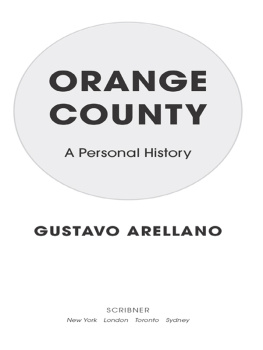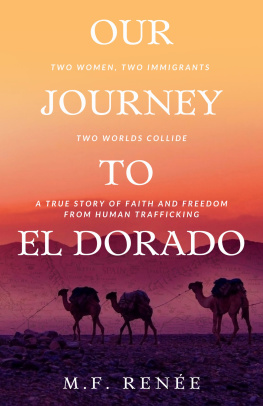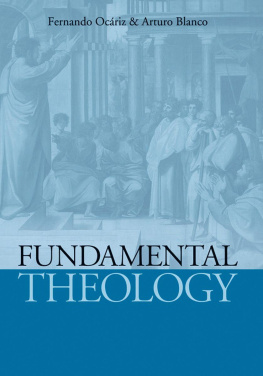
Pitchstone Publishing
Durham, North Carolina
www.pitchstonepublishing.com
Copyright 2015 by Fernando Alcntar
This is a work of creative nonfiction. The events are portrayed to the best of the authors memory and understanding, which may be different from the memory and understanding of others. Similarly, the conversations in the book all come from the authors recollections. Thus, they are not written to represent exact transcripts but rather to evoke the feeling and meaning of what the author heard or said. In some instances, the author has changed names and identifying details to protect the privacy of the people involved.
Library of Congress Cataloging-in-Publication Data
Alcntar, Fernando.
To the cross and back : an immigrants journey from faith to reason / Fernando Alcntar ; foreword by Dan Barker.
pages cm
ISBN 978-1-63431-048-2 (pbk. : alk. paper)
1. Alcntar, Fernando. 2. AtheistsUnited StatesBiography. 3. Christianity and atheism. I. Title.
BL2790.A38A3 2015
211.8092dc23
2015015162
Front cover design by Mark Rantal
CONTENTS

FOREWORD

This might be my fault.
If I had not started taking students from Azusa Pacific on short-term missionary trips to Mexico in 1968, the year I enrolled there, it is possible that faculty member Carolyn Koons would not have had the idea to start Mexico Outreach, and young Fernando Alcntar would not have met those preaching gringos in Mexicali whose testimony led not only to his conversion but also to his eventual graduation from Azusa Pacific, U.S. citizenship, and this wonderful book.
Carolyn had other influences besides me, of course, and she was a much better organizer than I was, so I cant take the credit (or the blame), but I was there at the very beginning, before it was called Mexico Outreach. Some of the California congregations we worked withsuch as Chapel in the Pineswere churches that I had been involved with in Mexico outreach since a few years before. I knew the Mexicali area and some of the pastors. I knew the warden of the Mexicali jail and was able to negotiate to have the Azusa Pacific basketball and soccer teams compete against the surprisingly talented prisoners within those overcrowded walls. I became acquainted with a couple of coyotes, young men with cars and TVs who described to me how and where they helped immigrants cross the border. I had already visited some of the orphanages. I had spent time ministering at La Granja (The Farm) just south of Mexicali in Colonia Ahumadita where delinquent Mexican boys were being educated behind barbed wire.
And I knew the language. I had been preaching in Mexico since 1964.
I was fifteen years old in 1964 when I accepted what I was convinced was a call to the ministry during a sermon at Anaheim Christian Center. I had already been involved with local ministry, having played the piano since 1963 for the Peralta Brothers Quartet in Hispanic churches in southern California, but after the call, I started carrying my bible to school, ministering to students and eventually convincing my Spanish teacher at Anaheim High School to give his life to Christ. Another student invited me to join Youth Unlimited Gospel Outreach, a short-term missionary group, during their next outreach to Mexico. It was a convenient four-hour drive to the foreign mission fieldat that time, we took the route past Palm Springs, Indio, and Coachella, skirting the dry and forbidding Salton Sea heading toward Calexicoand I was happy to fulfill my calling to spread the good news of Jesus to the desperate needy Mexicans south of the border. Mexicali, the most northerly city in Latin America, was easy pickings for us zealous Protestants, like the fruit dangling from the date palms we passed on the way there.
I preached my first public sermon during Thanksgiving weekend that year, when I was still fifteen, before a small crowd on the dusty bank of an irrigation canal in Ejido Morelia, a few miles south of the border. It was not a great sermon. Since I was still learning Spanish, I wrote it out and read from a pencilled piece of paper. I dont remember if we had any converts that day, but I do recall how interested the people were in us Americanos descending on their tiny village. Especially the children.
Most of those children in the ejidos south of Mexicali were barefoot and many were shirtless, but they were smiling, singing, laughing, happy to take our handouts and participate in the arts and crafts that illustrated the teachings of the bible. They did not appear to understand how depressed they were supposed to be due to their poverty and false religion. When we asked how many of them wanted to accept Jesus as their personal savior, every hand shot up: Yo! Yo! We were pleased to return home to report that we had led hundreds of souls to Jesus on the mission field.
The kids up in the city of Mexicali, where Fernando Alcntar was eventually born, were usually better dressed, but just as excited. When Fernando describes meeting the American missionaries in Mexicali more than two decades later, I can picture the scene perfectly, since I had been one of those gringos, playing my accordion and leading the children singing Soldado Soy de Jess (I Am a Soldier of Christ) hundreds of times, just as he describes in this book. Sometimes a few kids stood back a bit, watching us foreigners with cautious curiosity. I can see the observant (in both senses of the word) Roman Catholic Fernando Alcntar lingering there, taking in the strange and noisy American Protestant rituals.
I spent a total of more than two years as a missionary in Mexico, spread over two decades, much of it as a team leader and pianist with the Frank Gonzales Evangelistic Association, and some of it on my own initiative. (I describe some of those proselytizing adventures in my book Godless: How an Evangelical Preacher Became One of Americas Leading Atheists.) We took American high-school and college students on school-break and summer-long tours all across the country, from Tijuana to the Yucatn. When Fernando describes his years in Sinaloa, along the eastern side of the Gulf of California, I can conjure images of the days I spent preaching in Los Mochis, Navojoa, and other towns in that area. In 1970, after I was elected Spiritual Life Director at Azusa Pacific, I took a team of about fifteen APC students on a Tres Estrellas de Oro bus all the way to Mexico City where we preached and sang in a number of churches during Christmas break.
For many years after I left Azusa Pacific, I continued to be invited by the very capable Carolyn Koons and the inspirational professor/administrator Ron Cline to help with Mexico Outreach, which was growing into a huge endeavor. I was often the music and worship leader of the now-massive crowd of students sitting on the dry corn fields barely south of the border, an army of soldados invading and conquering a dark and lost country for Jesus.
Fernando Alcntars story is the flip side of mine. Just as the contrived-name cities of Calexico and Mexicali straddle the border of two very different countries like mirror images, I can see Fernandos face reflected in mine. We both know English and Spanish, though we didnt start with the same first language. He was raised Catholic and I was Protestant before we became evangelicals. We both spoke in tongues. He plays guitar and I play piano. I entered Azusa Pacific the year Francis Schaeffers influential
Next page






